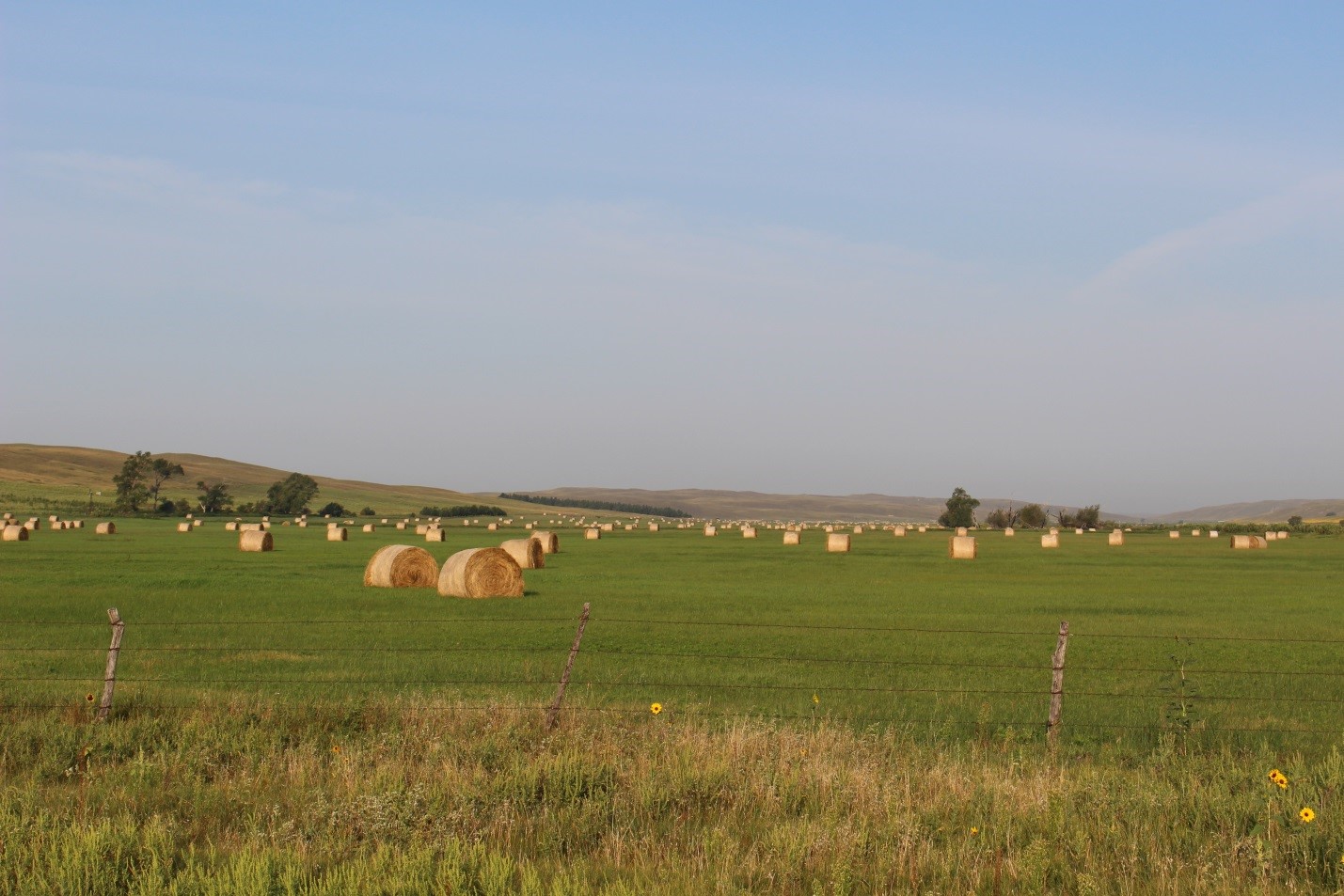
By Jerry Volesky, UNL Range and Forage Specialist, and Bruce Anderson, UNL Forage Specialist
Pasture and hayland grass growth is stimulated by fertilizer just like other crops. While nitrogen (N) is the primary nutrient most commonly needed for grasses, others, such as phosphorous (P), potassium (K), or sulfur (S) may also be deficient and could result in greater growth. Soil testing should be done to determine the specific nutrient needs and amounts. Common reasons for pasture or hayland fertilization might include trying to increase the vigor and density of the grasses or increasing production whether it is for hay or to be able to support more grazing livestock.
On subirrigated meadow that can be grazed or hayed, research has shown that a suggested fertilizer application of 70 lb N, 25 lb P, and 20 lb S per acre results in an average grass increase of about 0.75 tons/acre. If hayed, the economics of this would simply be related to the cost of the fertilizer application and the value of the hay. As one would expect, the greatest returns are when hay values are high and fertilizer costs are low. If $60 per ton is the anticipated hay value, then no more than $45 ($60 times the 0.75 ton/acre yield increase) could be spent on the fertilizer application to break even. At $100 per ton hay value, then fertilizer cost could be at $75 per acre to break even. One must keep in mind that there are risks. The yield response from the fertilizer can vary from year to year depending on weather conditions. Additionally, the location within the state and condition and type of grassland, whether it is a warm-season mixture, smooth bromegrass, or intermediate wheatgrass may all have somewhat different responses to the fertilizer.
Nebraska grazing research has shown that you get one pound of additional calf or yearling gain for every pound of nitrogen fertilizer applied. However, this fertilization rule-of-thumb assumes that the amount applied is within our general recommendations, which are based on the potential amount of extra grass growth expected. This is affected mostly by moisture. It also assumes that your grazing management will efficiently harvest this extra growth.
While haying is relatively efficient in capturing increased yield at harvest, it is important that when grazing, you must manage that grazing closely so more of what you grow actually gets eaten. If livestock graze continuously on one pasture throughout the growing season, there will be waste as a result of trampling, manure and fouling, bedding down, and patches or areas where livestock simply refuse to graze some of the grass. With the continuous grazing approach, only about 25 to 35% of the grass your pasture produced will end up in the mouth and stomach of your livestock. This will significantly reduce the economic return on any fertilizer that is applied.
To make the most of your fertilizer dollar, manage grazing so more of what you grow actually gets eaten. This will happen if you subdivide pastures with some cross-fences and control when and where your animals graze. Give livestock access to no more than one-fourth of your pasture at a time, and preferably less. Then graze off about one-half of the growth before moving to another subdivision. If your pastures aren’t already subdivided into at least four paddocks, your fertilizer dollar might be better spent on developing more cross-fences and watering sites.
To listen to BeefWatch podcasts go to: https://itunes.apple.com/us/podcast/unl-beefwatch/id964198047 or paste http://feeds.feedburner.com/unlbeefwatch into your podcast app.